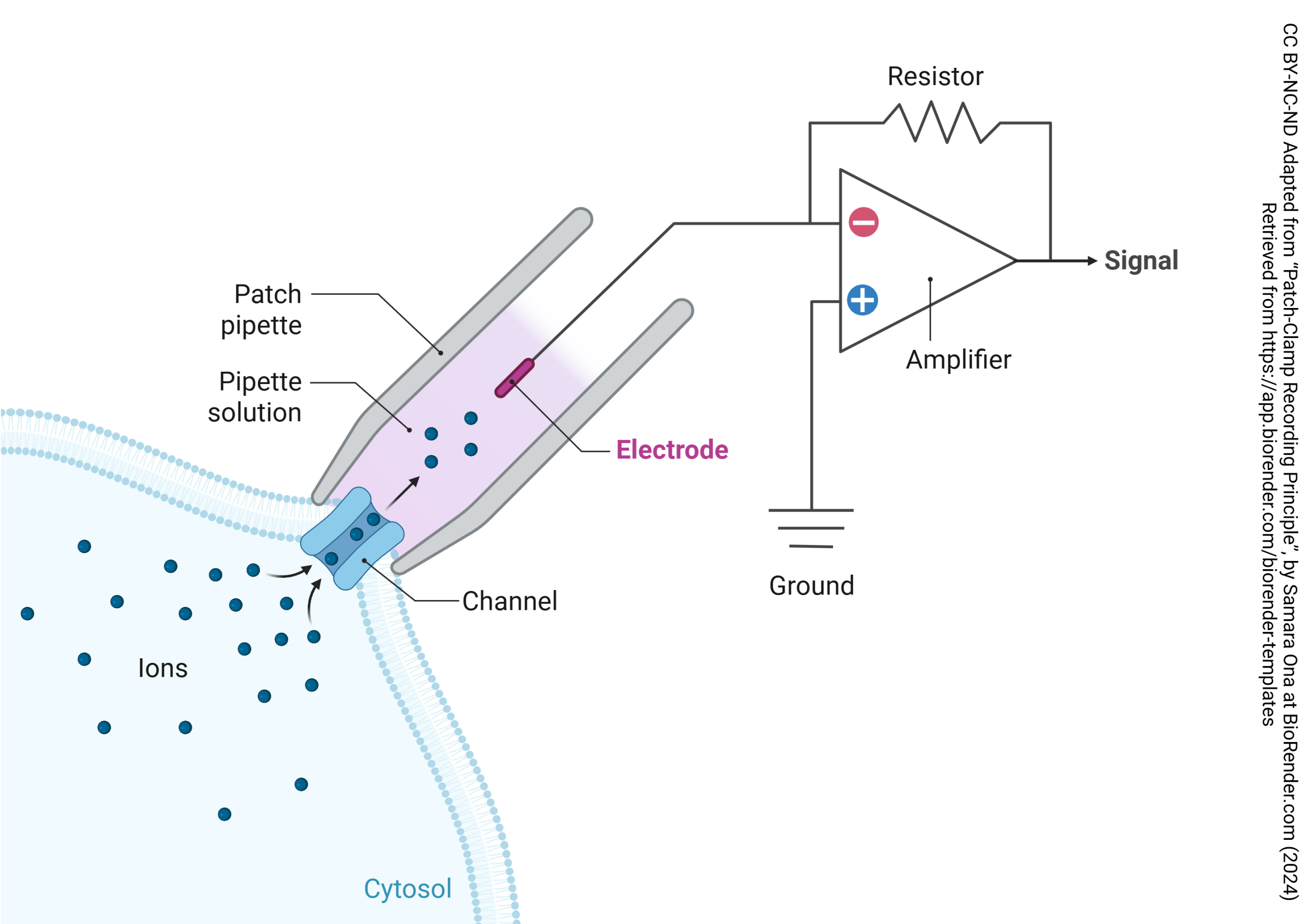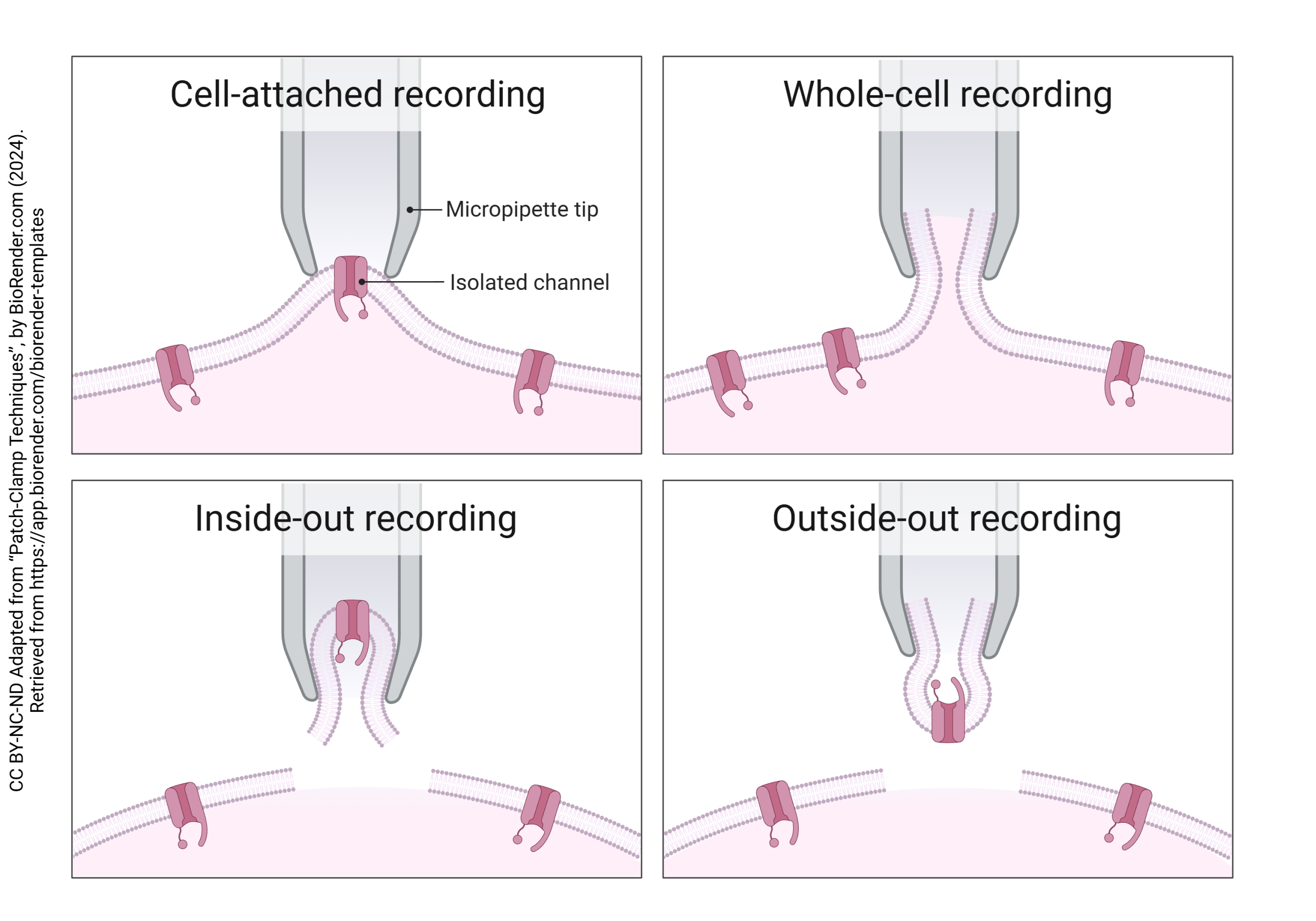Patch Clamping
Ryan Johnson and Jim Hutchins
Chapter under construction. This is the first draft. If you have questions, or want to help in the writing or editing process, please contact hutchins.jim@gmail.com.


Epistemology of channels
Introduction
In earlier chapters we covered briefly that neurons have electrical currents that run through them. This electrical charge is due to charged ions passing through the structure specific ion channels. In the late 1970s Erwin Neher and Bert Sakmann were the ones who discovered and created the ability to track the voltage of these ion channels as a ion passed through. Later receiving a nobel peace prize for their discovery this technique is still used to this day.
What is Patch Clamping
Patch clamping is involved with specifically ion channels. As the patch clamping is proceeding the researcher is looking at the properties of the protein channel. While in this period of observations the researcher is able to look at the electrical membrane potential of the neuron and record their findings. Some of the findings that may be made could be related to how the neuron electrical current is affected during distress.
Steps involved
Whole cell, outside out, and inside out are different types of a patch clamp. Depending on the type of patch clamp you are working with your methods will vary slightly. First step is to gather all your necessary tools like your pipet, amplifier, and electrolyte solution. Your electrolyte solution is mostly consisted of an electrolyte that is similar to the intracellular fluid. After the electrolyte solution is prepared you would fill the pipet with the solution and make sure there is no air pockets. Locating a cell is the next step and there would only be one. As you approach the cell with the pipet maintaining positive pressure is the most important step as it will allow you to be able to get a proper seal on the neuron. After the seal has been made you are free to do your experiments and record your observations.
The following videos are a great resource for seeing the patch clamp being performed.
Media Attributions
- Patch-Clamp Recording Principle © Samara Ona adapted by Jim Hutchins is licensed under a CC BY-NC-ND (Attribution NonCommercial NoDerivatives) license
- Patch-Clamp Techniques © BioRender adapted by Jim Hutchins is licensed under a CC BY-NC-ND (Attribution NonCommercial NoDerivatives) license

